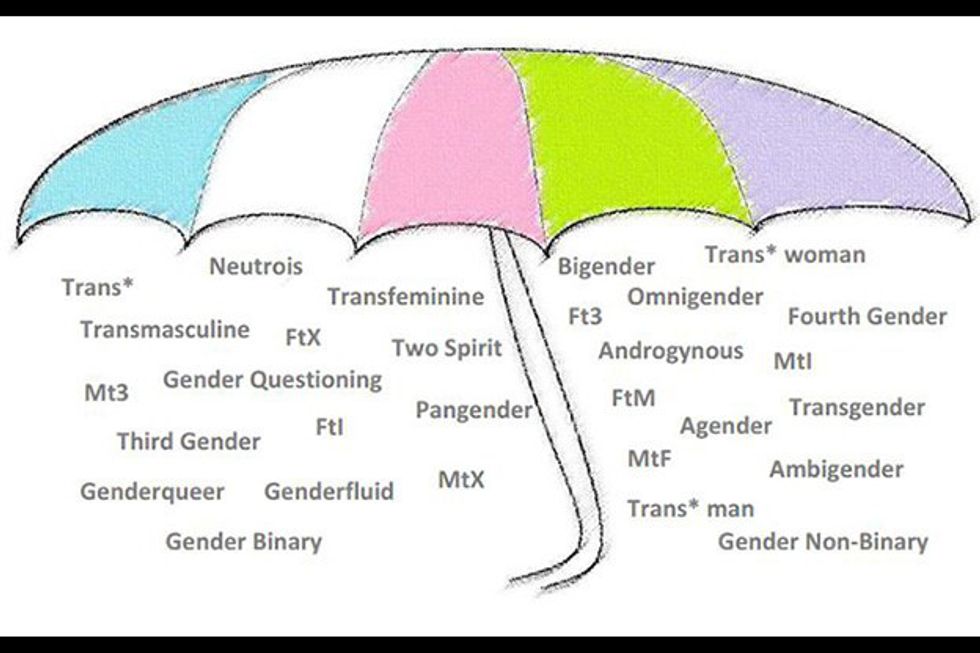Most people are cisgender. A cisgender person is someone who identifies with the gender they were assigned at birth based on their sex. "Gender" being who one is on the inside and "sex" meaning biological characteristics. So, if you identify as a woman and you were born with what society calls "woman parts", you are cisgender. The same thing goes for those who identify as men. However, societally-defined "woman parts" and "man parts" is problematic because transgender people exist.
Transgender people have gender identities that don't match up with the ones they were assigned at birth based on their sex. So, a transgender man is a man who was assigned female at birth. A transgender woman is a woman who was assigned male at birth. These are examples of binary transgender people, but there is another catch-all term underneath the transgender umbrella. It's called "non-binary,"
Recommended for you
"Non-binary" literally means "not binary." Western society only recognizes two genders, man and woman, and bases those genders on a person's physical appearance. This causes a binary system that undermines the lives of those who live outside of these boundaries. Non-binary people are those whose gender identities fall outside of the dichotomy. For example, some identify as both male and female, some switch between the two, and some identify as neither.
The concept of gender is an ever-growing, complex system where new terms and labels are constantly being added.. However, the experiences of non-binary people are not made up. Terms like genderfluid, agender, and demiboy are made up words, yes, but all words are made up. People existing outside of the gender binary are just creating these terms in order to better express their internal experiences.
In the past couple years, a variety of both mainstream and less popular celebrities and public figures have been coming out as non-binary and genderqueer, giving the concept a bit more publicity. In 2014, "Orange Is The New Black" star Ruby Rose explained her meaning of gender fluidity and said, "For the most part, I definitely don’t identify as any gender. I’m not a guy; I don’t really feel like a woman, but obviously I was born one. So, I’m somewhere in the middle, which — in my perfect imagination — is like having the best of both sexes."
Although recognition of non-binary genders has been around for centuries across the globe, the Western world is only beginning to view them is valid. In recent years, small steps have been taken to further the recognition of non-binary people. In 2014, Facebook added over 50 gender options for users to choose from, and leaving gender private or blank became an option as well. In 2015, dictionary.com added "agender", "gender-fluid", and "bigender" to their list of definitions. Also, dozens of college campuses have been adding a gender-inclusive housing option to their residence halls.
Recognition of non-binary identities is increasingly better as months and years go on, but there is still more work that needs to be done. Many people are still uneducated on what it means to be non-binary and how to treat and respect these identities. The best thing people can do to fix this problem is show people that non-binary people are people just like anyone else, and that their identities deserve respect regardless of society's recognition of them or lack thereof.



















